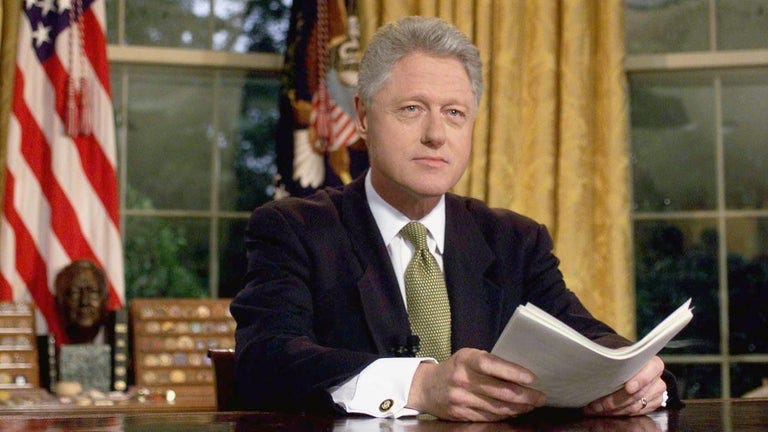The Evolution of Bill Clinton's Approval Ratings: A Presidency in Perspective
Bill Clinton’s presidency, spanning from 1993 to 2001, was one of the most eventful and complex in modern American history. His approval ratings reflect not just his policies but also the unique challenges and controversies he faced. Let’s explore how public perception of President Clinton evolved before, during, and after his presidency.
Before the Presidency: The Arkansas Governor Goes National
Bill Clinton entered the 1992 presidential race as a relative unknown on the national stage, even having served six terms as Governor of Arkansas. Early in his campaign, Clinton’s favorability was mixed, as he faced personal controversies, including allegations of infidelity and questions about his Vietnam War draft avoidance. Despite these hurdles, his charisma and economic promises, such as establishing fiscal discipline, eliminating the budget deficit, keeping interest rates low, and investing in people through education, training, science, and research, helped him secure the Democratic nomination.
By the general 1992 election, Clinton’s approval among Democrats was strong (80% convention tallies), though his national favorability ratings hovered in the low to mid-30s. The backdrop of a struggling economy under George H.W. Bush worked in his favor, enabling Clinton to frame himself as the change candidate. His victory, with a 43% plurality of the popular vote in a three-way race, reflected a divided but hopeful electorate.
During the Presidency: Peaks, Valleys, and Scandal
Clinton’s two presidential terms were marked by significant fluctuations in approval ratings, driven by economic performance, legislative battles, and personal controversies.
The First Term (1993–1996): Rocky Start, Economic Upswing

Clinton’s first year in office was challenging. His attempt at health care reform failed, and early missteps, such as the controversy over “Don’t Ask, Don’t Tell,” alienated some voters. His approval ratings dipped to the mid-40s in 1994, contributing to the Republican Party’s sweeping victory in the midterms, known as the "Republican Revolution."
However, Clinton's fortunes improved in the latter half of his first term. The economy began to recover, with job growth and a booming stock market bolstering public confidence. By 1996, Clinton's approval ratings had climbed back to the mid-50s, helping him secure reelection with a comfortable margin against Bob Dole.
The Second Term (1997–2001): Scandal and Resilience

Clinton’s second term began with average approval ratings, often in the high 50s, as the economy soared during the dot-com boom. However, the Lewinsky scandal and subsequent impeachment proceedings in 1998 tested his presidency. Despite the scandal dominating headlines, Clinton’s approval ratings remained surprisingly robust, averaging around 60%. Many Americans seemed to separate their disapproval of his personal conduct from their satisfaction with his handling of the economy and governance.
By the end of his presidency in January 2001, Clinton enjoyed an approval rating of 66%. Presiding over economic prosperity helped him weather scandal and impeachment, leaving a mixed but largely favorable impression.
After the Presidency: Reappraisal and Legacy
Indeed, Clinton’s post-presidential favorability ratings have remained strong. Polls conducted in the years following his presidency often show him with favorability ratings in the 50s or higher, particularly among Democrats. His global humanitarian work through the Clinton Foundation and prominent role in Democratic politics has reinforced his image as a skilled and effective leader.
However, his legacy remains contentious. Critics point to the long-term consequences of policies such as welfare reform, the 1994 crime bill, and the repeal of Glass-Steagall. Additionally, the Me Too movement has prompted some to reexamine his personal behavior in a harsher light.
Conclusion: A Presidency of Contrasts
Bill Clinton’s approval ratings reveal a leader who managed to maintain public support through both triumphs and tribulations. While his presidency was far from scandal-free, his focus on economic growth and centrist policies won him enduring respect from many Americans. As history continues to evaluate his legacy, Clinton’s ability to navigate political storms and his ability as the last president to balance the federal budget allowed him to stay popular, which is a testament to his unique political talents.
Reference:
"US President - D Convention Race - Jul 13, 1992"Our Campaigns. Retrieved 2016-08-03. https://www.ourcampaigns.com/RaceDetail.html?RaceID=58505





